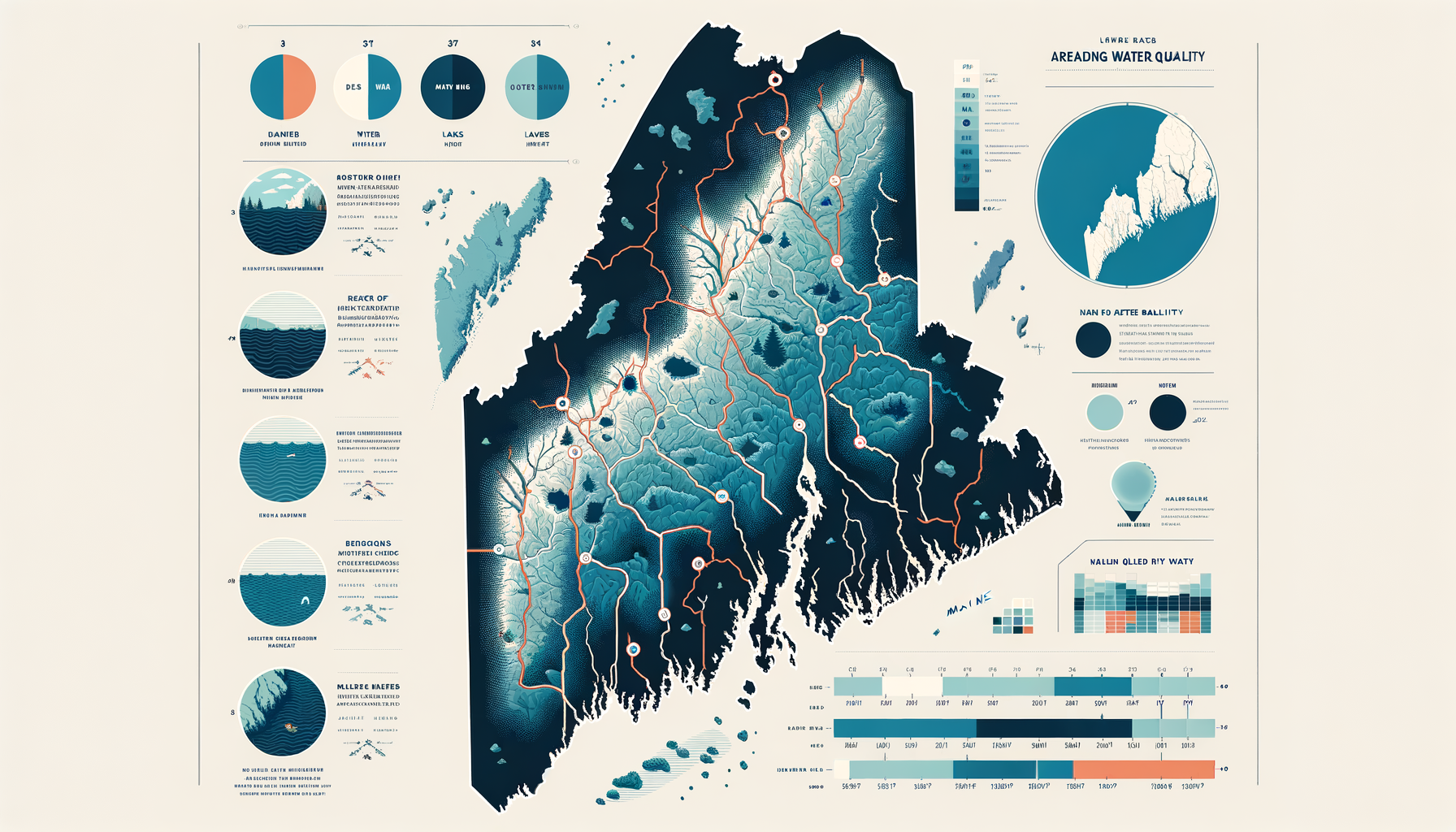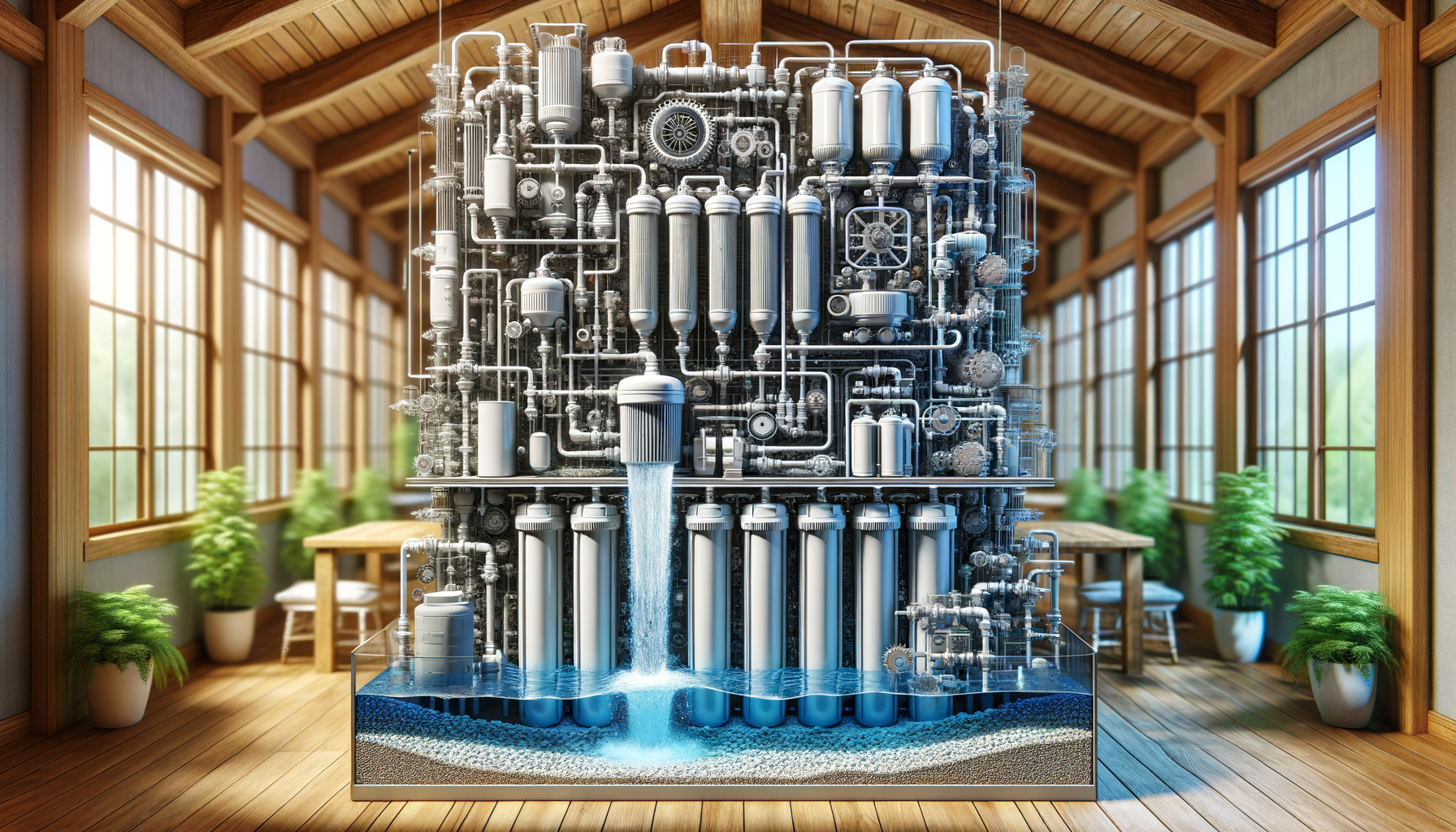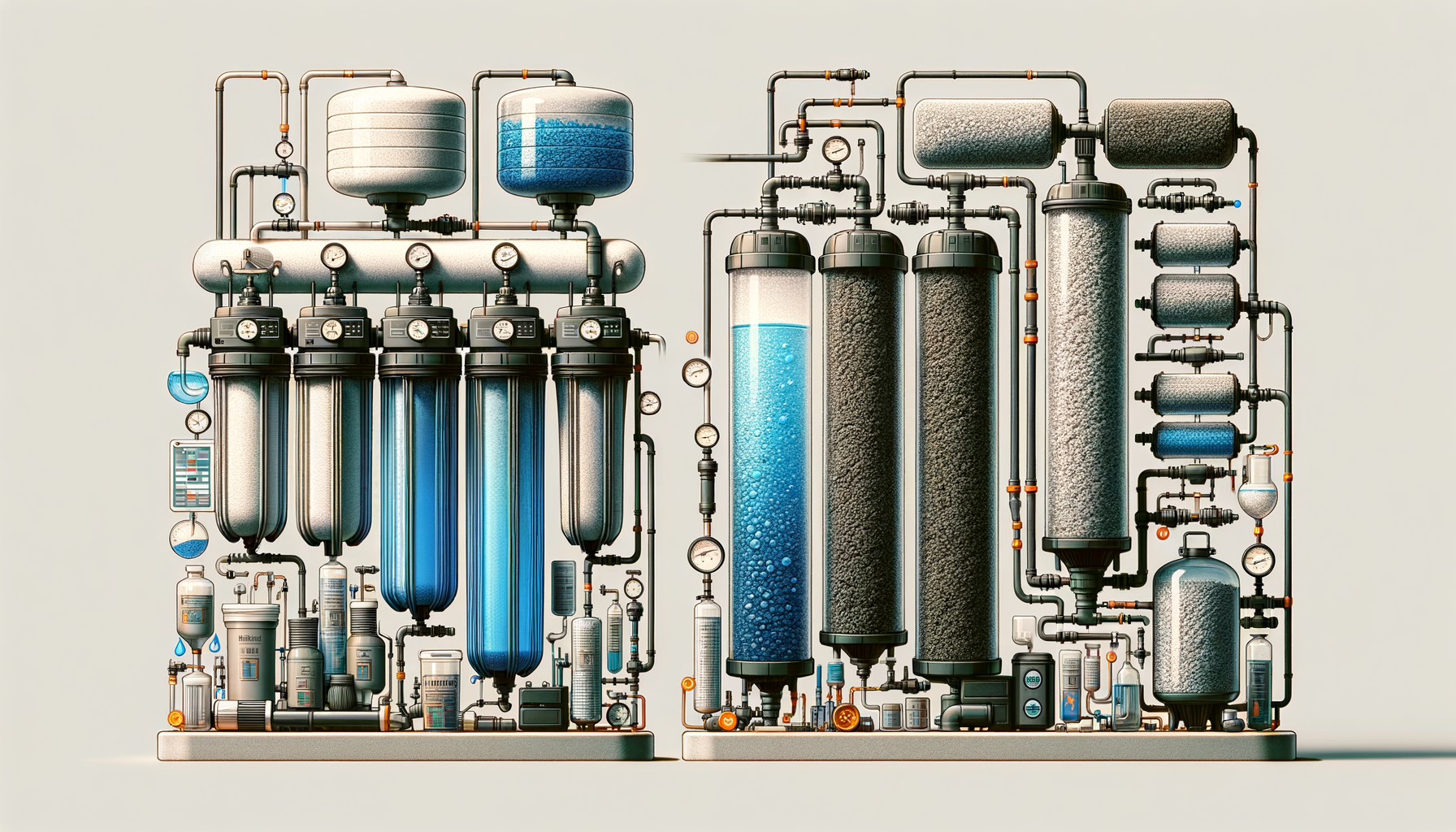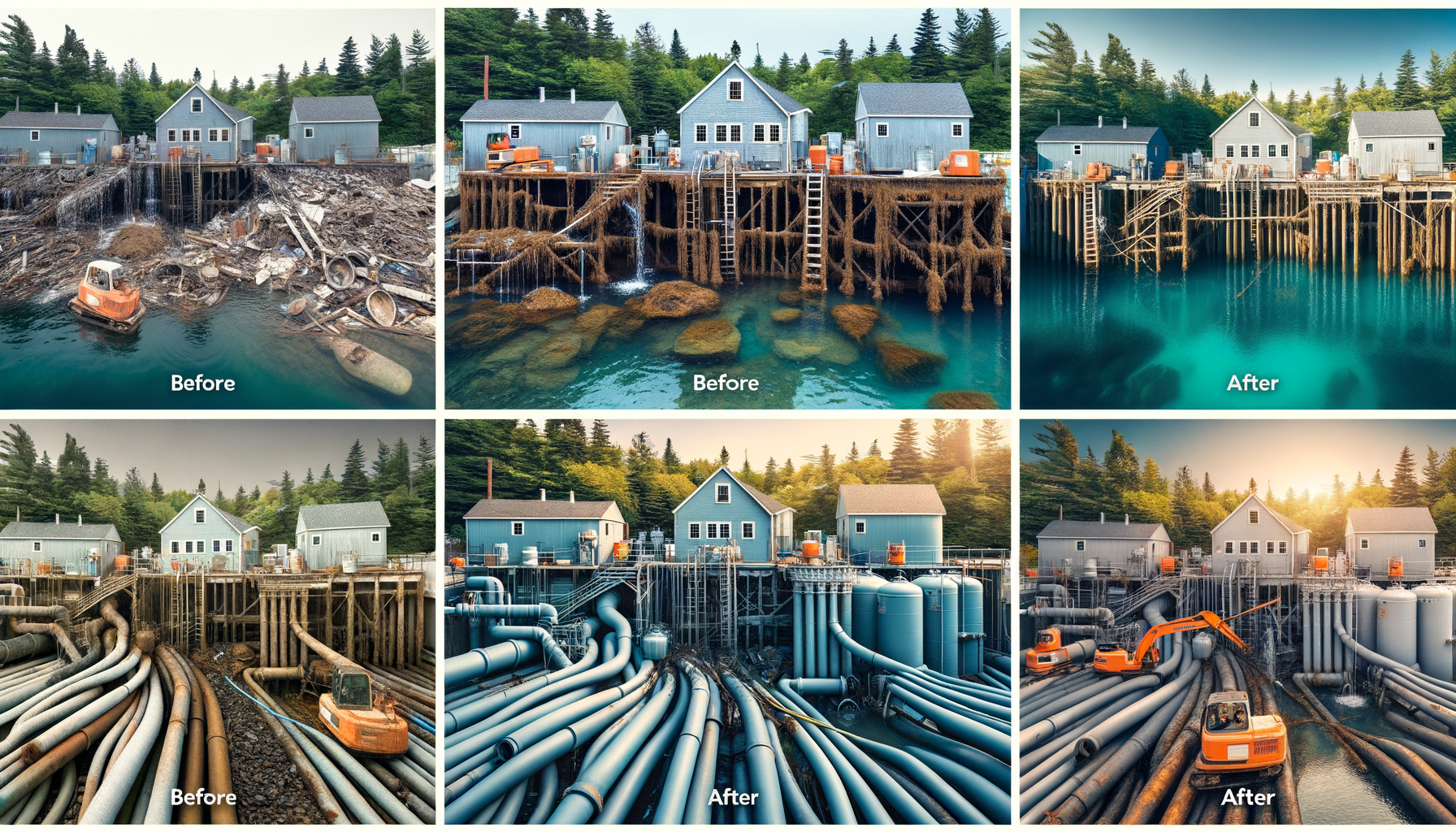Comprehensive Guide to Water Quality in Maine: Contaminants, Issues, and Water Filtration Solutions
by Ryan Moreau / updated February 15th, 2025
Maine is renowned for its pristine water resources—from the rugged coastline dotted with historic lighthouses to the crystal-clear lakes and rivers that traverse its vast forests. Despite this abundance, the state faces unique water quality challenges due to natural geological arsenic, legacy industrial pollutants, and agricultural runoff. In this comprehensive guide, we explore the common contaminants in Maine’s water, regional water quality challenges, and effective filtration solutions. Start by using our Water Quality Tool to get a customized analysis of your local water conditions.
Overview of Maine’s Water Sources
Maine’s water supply is as diverse as its landscape. Key sources include:
- Lakes and Rivers: The state boasts numerous lakes such as Moosehead Lake and Sebago Lake, which serve as significant sources for drinking water and recreation.
- Coastal Waters: The vast Atlantic coastline influences groundwater quality in coastal communities and supports a thriving fishing industry.
- Groundwater Aquifers: Many rural communities rely on private wells tapping into groundwater, which can vary in quality due to geological variations.
- Public Water Supplies: Municipalities draw water from surface water sources and wells, providing treated water to residents.
Maintaining water quality across these varied sources requires vigilant monitoring and community engagement to address both natural and man-made contaminants.
Common Water Quality Contaminants in Maine
Maine’s water sources may contain a range of contaminants due to natural geology, industrial activities, and agricultural practices. To better understand what might affect your area, start with our Water Quality Tool and then review these common issues:
1. Arsenic
Maine’s natural geology contributes to elevated levels of arsenic in groundwater, particularly in private wells. Long-term exposure to arsenic can lead to serious health issues, including skin lesions, cardiovascular disease, and various cancers.
Water Filtration Options for Arsenic: Reverse Osmosis Water Filters, Activated Alumina Filters
2. Radon
Radon gas is another naturally occurring contaminant in Maine’s groundwater. Radon in water can contribute to indoor air radon levels, posing a risk of lung cancer upon inhalation and stomach cancer upon ingestion.
Water Filtration Options for Radon: Aeration systems and granular activated carbon filters can effectively remove radon from water.
3. Uranium
Some areas in Maine have groundwater with elevated uranium levels due to natural mineral deposits. Uranium exposure can affect kidney function and increase cancer risk.
Water Filtration Options for Uranium: Reverse Osmosis Water Filters, anion exchange units.
4. Manganese and Iron
While not typically harmful at low levels, high concentrations of manganese and iron can affect the taste, odor, and color of water, and can cause staining on plumbing fixtures and laundry.
Water Filtration Options for Manganese and Iron: Oxidation filtration systems, greensand filters, and aeration systems.
5. Nitrates
Agricultural runoff and improper septic systems in Maine can elevate nitrate levels in groundwater, posing risks especially to infants. Excess nitrates are associated with methemoglobinemia, also known as “blue baby syndrome.”
Water Filtration Options for Nitrates: Reverse Osmosis Water Filters
6. Per- and Polyfluoroalkyl Substances (PFAS)
PFAS contamination has emerged as a concern in parts of Maine, often linked to industrial sites, military bases, and areas where wastewater sludge has been applied as fertilizer. Chronic exposure to PFAS can affect the liver, immune system, and increase the risk of certain cancers. For more detailed information, visit the EPA PFAS Tools and our PFAS Contamination Guide.
Water Filtration Options for PFAS: Activated Carbon Water Filters, Reverse Osmosis Water Filters
7. Bacterial Contamination
Private wells in Maine may be susceptible to bacterial contamination due to septic system failures or surface water infiltration. Coliform bacteria presence indicates a pathway for pathogens to enter the water supply.
Water Filtration Options for Bacterial Contamination: UV disinfection systems, chlorination, and proper well maintenance.
8. Heavy Metals (Lead and Copper)
Aging plumbing in older homes and infrastructure can lead to lead and copper leaching into the water. This is a concern in some of Maine’s historic towns and cities, posing risks particularly to children and pregnant women.
Water Filtration Options for Heavy Metals: Reverse Osmosis Water Filters, point-of-use filters certified for lead removal.
9. Fluoride
Fluoride naturally occurs in Maine’s groundwater but is generally not at levels of concern. However, excessive fluoride levels can sometimes occur and may lead to dental fluorosis, especially in children.
Water Filtration Options for Fluoride: Reverse Osmosis Water Filters, activated alumina filters.
Regional Water Quality Challenges in Maine
Maine’s geography and industrial history contribute to various regional water quality challenges. According to the EPA and the Maine Center for Disease Control and Prevention (Maine CDC), key challenges include:
1. Central Maine: Elevated Arsenic Levels
In areas such as Kennebec County, naturally occurring arsenic in bedrock leads to elevated arsenic levels in private wells. Residents in these areas are encouraged to test their water and consider treatment options.
2. Southern Maine: PFAS Contamination
Communities near industrial sites and former military installations, like in York County, have detected PFAS in water supplies. Efforts are underway to monitor and mitigate PFAS contamination in affected areas.
3. Coastal Regions: Saltwater Intrusion
Over-withdrawal of groundwater in coastal communities can lead to saltwater intrusion, impacting the taste and salinity of well water.
4. Agricultural Areas: Nitrate Runoff
Regions with intensive farming, like Aroostook County, may experience nitrate contamination from fertilizer use, impacting groundwater quality.
General Water Characteristics in Maine
Beyond specific contaminants, Maine’s geology and climate result in unique water characteristics. Understanding these traits helps in selecting the right treatment solutions:
1. Water Hardness
Maine’s water hardness varies by region. In general, groundwater in Maine tends to be moderately hard due to the presence of calcium and magnesium minerals. Hard water can cause scale buildup in pipes and affect appliance efficiency.
For households experiencing hard water, water softeners are recommended. If you’re unsure whether you need a water softener or which type fits your family’s needs, try our Water Softener Calculator for personalized guidance.
2. Acidic Water Conditions
In some areas, groundwater in Maine may be slightly acidic due to the natural presence of carbon dioxide in soil and decaying organic matter. Acidic water can be corrosive to plumbing and may leach metals like copper and lead.
- Low pH Levels: Acidic water with a pH below 7 can cause corrosion of metal pipes.
- Infrastructure Impact: Homes with older plumbing are particularly susceptible to corrosion-related issues.
To mitigate acidic conditions, installing a neutralizing filter can help balance pH and protect your plumbing.
3. Organic Matter in Surface Water
Maine’s abundant forests contribute to high levels of natural organic matter in surface water sources. While generally harmless, this can react with disinfectants like chlorine to form disinfection byproducts (DBPs), which may pose health risks.
- Tannins: Organic compounds that can tint water with a yellow or brownish color.
- Disinfection Byproducts: Formation of compounds like trihalomethanes (THMs) during water treatment.
Filtration systems with activated carbon can effectively remove organic matter and reduce disinfection byproducts.
Utilizing the Water Quality Tool for Maine Residents
Understanding your local water quality is essential for ensuring safe drinking water. Our Water Quality Tool enables Maine residents to:
- Enter their zip code for a detailed analysis of local water sources
- View data on common contaminants in public and private water supplies
- Receive personalized recommendations for filtration systems based on your water quality challenges
Recommended Filtration Solutions for Common Maine Contaminants
Based on the prevalent contaminants identified in Maine’s water sources, the following filtration systems are highly recommended:
1. Reverse Osmosis Systems
Reverse Osmosis Systems offer broad-spectrum removal of arsenic, uranium, nitrates, lead, and other contaminants common in Maine’s groundwater. These systems are ideal for both under-sink and whole-house installations.
2. Activated Alumina Filters
Activated Alumina Filters are effective in removing arsenic and fluoride from water, making them suitable for areas with high natural concentrations of these contaminants.
3. UV Disinfection Systems
For bacterial contamination, UV disinfection systems effectively neutralize pathogens without the use of chemicals, ensuring safe drinking water, particularly for private well owners.
4. Acid Neutralizing Filters
To address acidic water conditions, acid neutralizing filters use calcite or magnesium oxide to raise the pH of water, reducing corrosivity and protecting plumbing.
Local Water Testing Services in Maine
Accurate water testing is essential to pinpoint the contaminants in your water supply. We recommend using SimpleLab for comprehensive water quality analysis. Their user-friendly kits and detailed lab reports empower you to make informed decisions about your water filtration system.
Additionally, the Maine CDC recommends regular testing of private wells for contaminants such as arsenic, bacteria, and radon. Local laboratories certified by the state provide testing services to residents.
Case Studies: Addressing Water Quality Issues in Maine
Real-world examples provide valuable insights into how various water quality challenges in Maine are being addressed:
1. Kennebec County: Mitigating Arsenic in Private Wells
Residents in Kennebec County have implemented reverse osmosis systems to reduce arsenic levels in their private wells after testing revealed concentrations above EPA standards. Community outreach programs have increased awareness and testing rates.
2. Fairfield: PFAS Contamination Response
The town of Fairfield faced PFAS contamination in its water supply due to historical land application of contaminated sludge. The town has provided bottled water to affected residents and is working on long-term solutions, including installing point-of-entry filtration systems.
3. Coastal Towns: Combating Saltwater Intrusion
In coastal communities like Wells and Kennebunkport, overuse of groundwater has led to saltwater intrusion. Local authorities have implemented water conservation measures and alternative water sourcing to alleviate the pressure on aquifers.
Call to Action
Maine’s diverse water sources—from the clear lakes and rivers to the extensive groundwater aquifers—require proactive water quality management. Understanding your local water challenges and implementing effective filtration solutions is essential for safeguarding your household’s health.
Start by entering your zip code into our Water Quality Tool for a detailed analysis of your water supply. Then, explore our filter review articles to find the most effective system for your needs. Finally, confirm your water’s safety with comprehensive water testing services to ensure you have the clean, safe water your home deserves.







